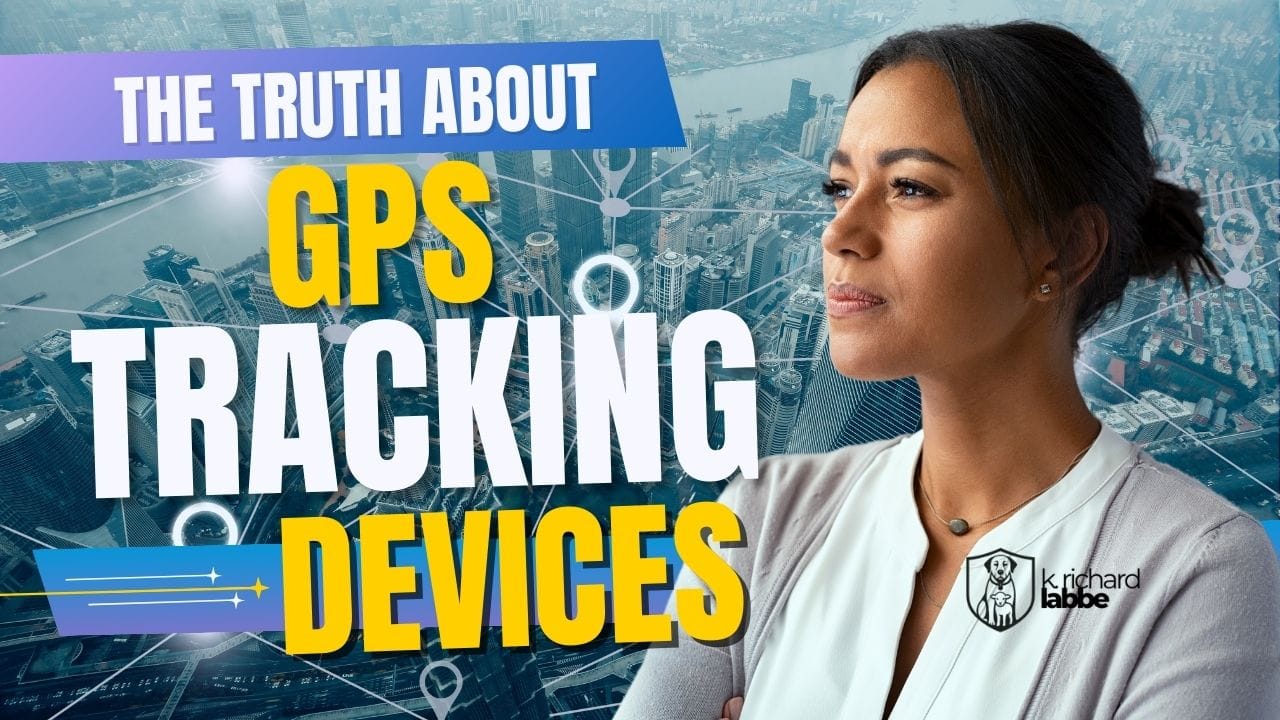The Truth About GPS Tracking Devices (And How to Check for One)
GPS tracking isn’t just something out of spy movies anymore. It’s real, it’s affordable, and when used wrongly, it can cross serious lines. But don’t panic—with a little awareness, you can protect your privacy and peace of mind.

Why This Matters
Not long ago, if you said you were worried about someone putting a GPS tracker on your car, people might’ve raised an eyebrow. Today? They nod knowingly.
For under $30, anyone can buy a small, discreet tracking device online and drop it into a bag, tuck it under a bumper, or slip it into a glovebox. And while many use these tools for legitimate reasons—like locating lost keys, keeping track of teen drivers, or managing a delivery fleet—misuse is on the rise.
Maybe you’ve heard the stories. Someone finds an AirTag taped inside their child’s backpack. A stalking victim learns her ex was tracking her car. Even law enforcement agencies are warning about thieves planting trackers to steal cars later when the coast is clear.
That’s why we’re talking about this today. Not to create fear—but to bring clarity. You deserve to know the facts, know what to look for, and know what to do if something doesn’t feel right.
What GPS Tracking Devices Actually Are
Most GPS tracking devices are about the size of a matchbox—or even smaller. They use satellites to determine their location, and many pair with apps or websites to report that information to someone else in real time.
There are two basic kinds: Real-time trackers, which send live updates through cellular networks, and passive trackers, which simply log locations internally and have to be retrieved later to access the data.
If you’ve used an Apple AirTag, a Tile, or similar Bluetooth device to find your keys or luggage, you’ve used this kind of technology. These tools are genuinely helpful—until they’re used without someone’s knowledge or consent.
The Rise of Everyday Tracking (and Why It’s a Problem)
When Apple released the AirTag, they didn’t set out to enable stalking. But it wasn’t long before the potential for abuse became clear. Soon after launch, reports began pouring in: women finding AirTags slipped into their purses, car owners discovering them near license plates or tucked into bumpers.
Apple responded by building in automatic alerts—if an AirTag that isn’t yours is moving with you, your iPhone will let you know. Google has begun implementing similar protections for Android users.
But that’s only part of the picture. There are dozens of other trackers on the market, many without safety features. And not all devices are easily detected.
How to Know if You’re Being Tracked
If you’ve ever had the uneasy feeling that someone knows where you are when they shouldn’t—it’s worth listening to that instinct. But you don’t need to go full detective mode. Just begin with a few calm, practical checks.
First, if you have an iPhone or a newer Android phone, it may notify you if a Bluetooth tracker (like an AirTag) is moving with you. That’s a good sign—but don’t assume it’s foolproof. You can also scan manually using Apple’s “Find My” app under “Items” or, if you’re on Android, by downloading a free app like “Tracker Detect.”
Beyond digital tools, there’s still no substitute for a simple, physical scan. Take a flashlight and take five slow minutes to check your vehicle—under the bumpers, inside the wheel wells, in the trunk, beneath the seats. Most trackers are stuck on magnetically or tucked into hidden compartments. You don’t need to know what you’re looking for—just check for anything that doesn’t belong.
Some people choose to invest in a handheld signal detector (often called a bug sweeper). These devices detect wireless signals from trackers that are actively transmitting. They can’t catch every type, especially passive ones, but they’re useful if you have ongoing concerns or travel often.
Here's my recommendation for a handheld detector (Amazon affiliate link).
What To Do If You Find a Tracker
If you do find a device and you didn’t put it there, pause. Don’t panic.
Remove it if you can do so safely. Then document what you found: take a photo, note the date and time, and write down where it was hidden. These details matter if you end up speaking with law enforcement.
From there, contact your local police department. Tracking someone without their knowledge is often a criminal offense, especially in domestic situations or if you’ve previously reported harassment. The laws vary by state, but most have protections in place.
It also helps to report the device to the company that made it. Apple, Tile, and others have abuse reporting systems and may be able to trace the tracker’s owner.
Where the Law Stands
The legality of tracking depends on who placed the device and whose property it was placed on. You’re generally allowed to track your own belongings or your child (if they’re a minor). You’re not allowed to place a tracker on someone else’s car, backpack, or person without permission.
That’s not just a violation of trust—it’s often a violation of law.
If you’re unsure about your local regulations, don’t guess. A quick call to your local non-emergency police line or legal aid office can clarify what’s allowed and what crosses the line.
Do This Today
You don’t need to overhaul your life. But you can take a few steps to increase your awareness:
- Open your phone and review your “Find My” settings.
- Talk with your family, especially teens or aging parents, about how these devices work—and how they can be misused.
- Give your car a once-over. Not because you’re afraid, but because you’re wise.
- And if something doesn’t sit right? Don’t shrug it off. Trust your instincts.
Final Word: Prepared, Not Paranoid
There’s no need to walk through the world in fear. But there is value in walking through it awake.
Knowing how to spot a GPS tracker—and how to respond if you find one—isn’t fear-based living. It’s informed, grounded, and protective. It’s part of caring well for yourself and those you love.
Prepared, not paranoid. That’s how we stay safe.
Stay safe. Be ready. Online and off.
Every effort has been made to ensure the accuracy and reliability of the information presented here. While Labbe Media, LLC strives to offer clear, well-researched guidance, this content is intended for educational purposes only and isn’t a substitute for professional advice tailored to your situation. We encourage you to use this material as a starting point—and to double-check details and consult trusted professionals when making important decisions.
